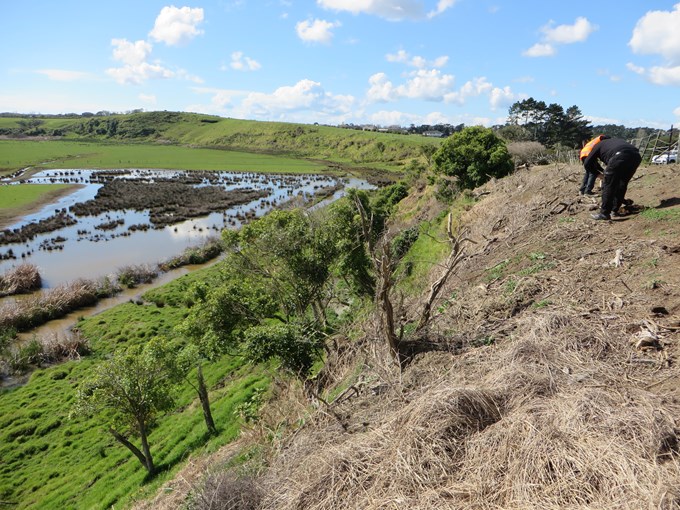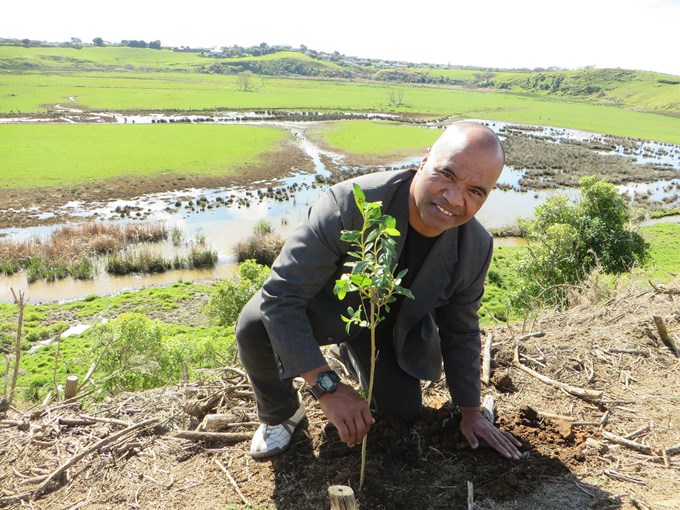The rim of Te Pūkaki Tapu o Poutukeka Crater (Pūkaki Crater) in Māngere has been stabilised following a preservation project supported by Māngere-Ōtāhuhu Local Board.
Fencing and tree planting will help strengthen the eroding southwest rim of the crater.
“The stabilisation work was quite simple, but gaining the necessary consents required extensive consultation with other council teams, outside experts, the local iwi, and Heritage New Zealand,” says Māngere-Ōtāhuhu Local Board deputy chair Togiatolu Walter Togiamua.
The local board's investment in the project demonstrates its commitment to working alongside mana whenua, particularly with regards to preserving sites of cultural and natural significance in the area.
“We sponsored the technical reports and trees needed for the stabilisation work. This is an important investment that will help maintain the integrity of Pūkaki Crater."
Better protection for urupā access
The stabilisation work will also better protect Te Ākitai Waiohua access to their urupā (cemetery).
“Pūkaki is significant because of its place in our history and because our urupā sits atop the crater,” says Karen Wilson, Chairperson of the Te Ākitai Waiohua Iwi Authority and the Pūkaki Māori Marae Committee.
“Our crater is also known as Te Pūkaki Tapu o Poutukeka – the sacred wellspring of Poutukeka. Poutukeka was one of the crew of Tainui waka and an ancestor of generations of mana whenua in the area. It is a waahi tapu, a direct connection to our tūpuna.”
About Te Pūkaki Tapu o Poutukeka (Pūkaki) Crater
Pūkaki is also known as Ngā Tapuwae o Mataaho – the footprints of Mataaho, the deity associated with volcanic forces. The footprints are evidenced by a series of volcanic explosion craters.

The Pūkaki Crater is between 80,000 and 100,000 years old. It is a circular volcanic explosion crater and the most pristine in the Auckland volcanic field. The crater and lagoon are co-managed by Auckland Council and Te Ākitai Waiohua from Pūkaki Marae.
The crater is an outstanding natural feature and has significant ecological area status because of its biodiversity. The Pūkaki lagoon is in the New Zealand Geo-preservation Inventory as being of international, national, regional scientific and educational significance.


